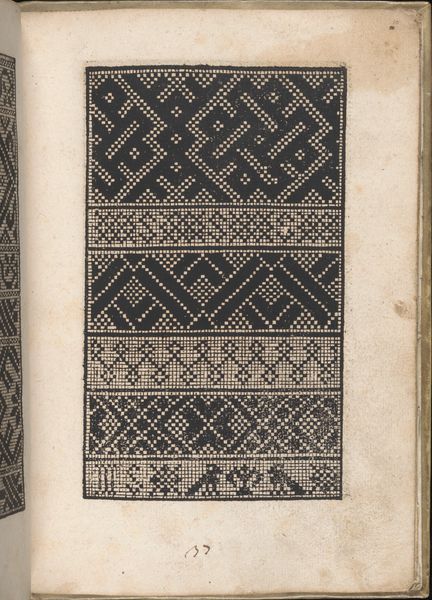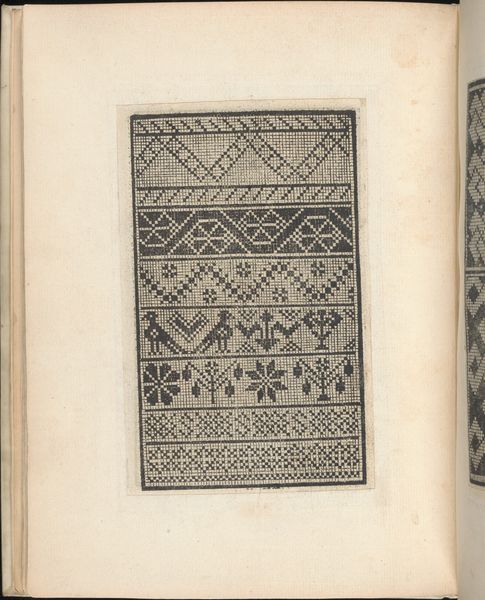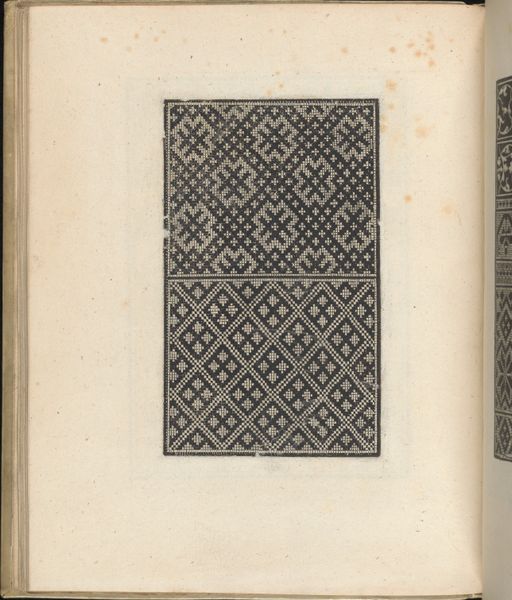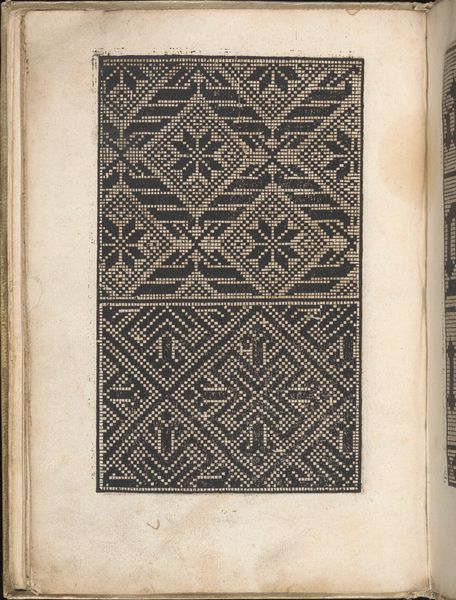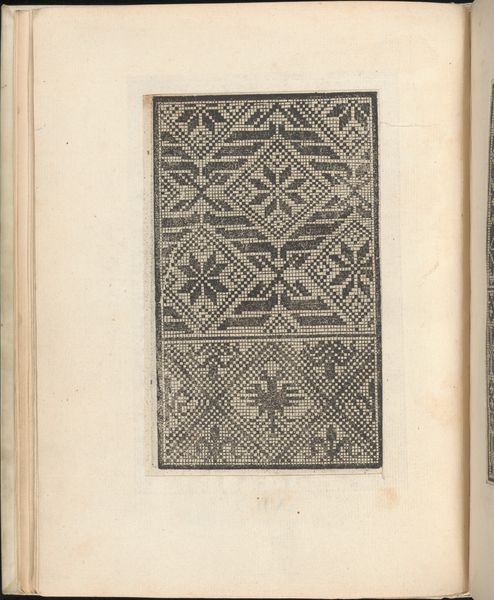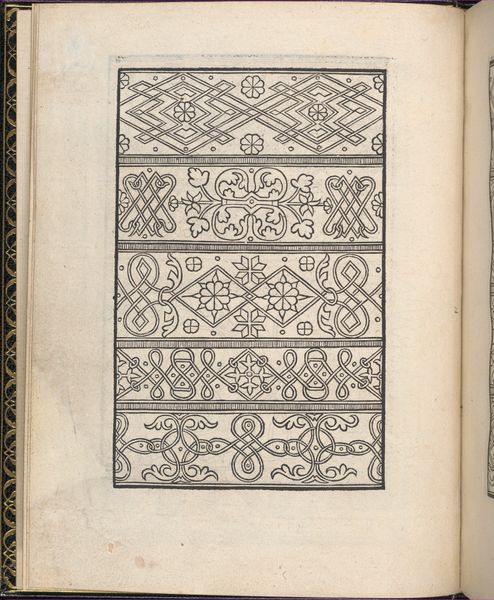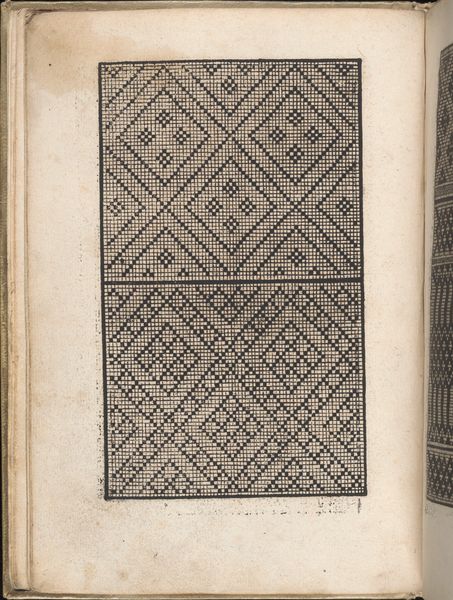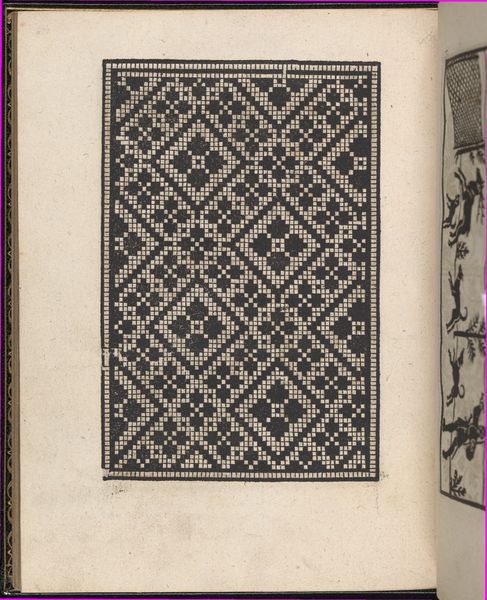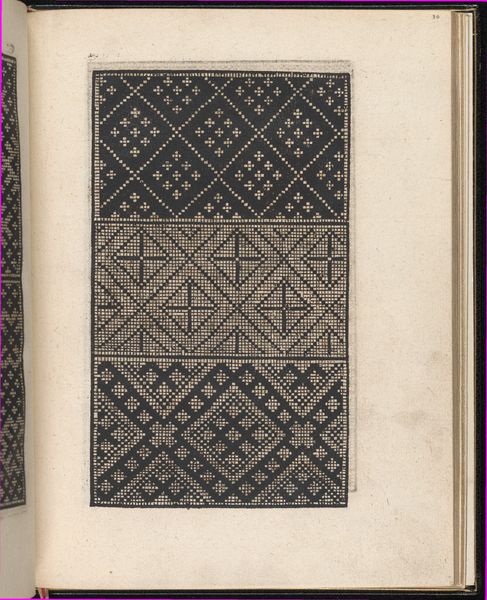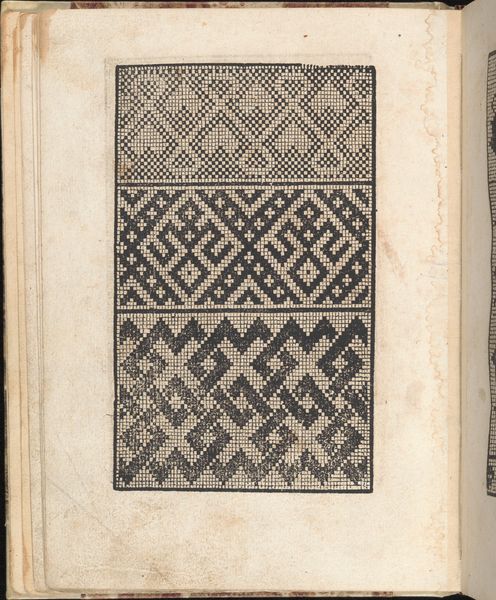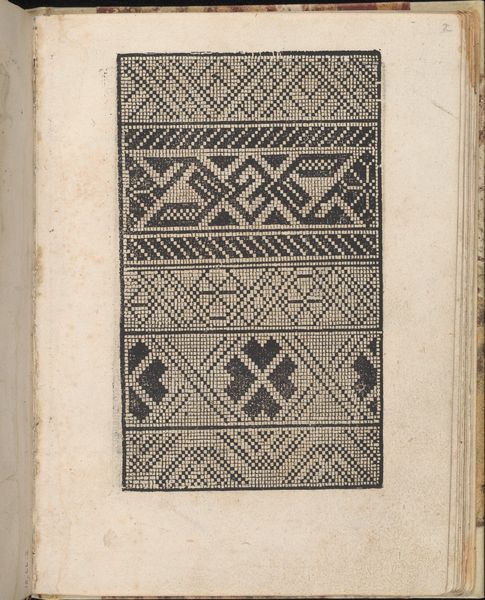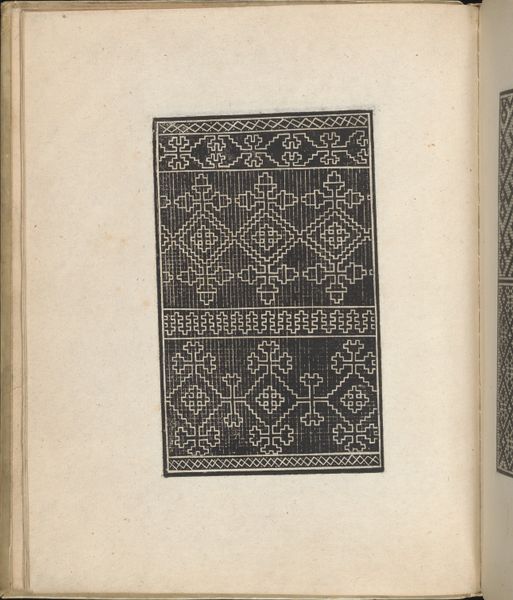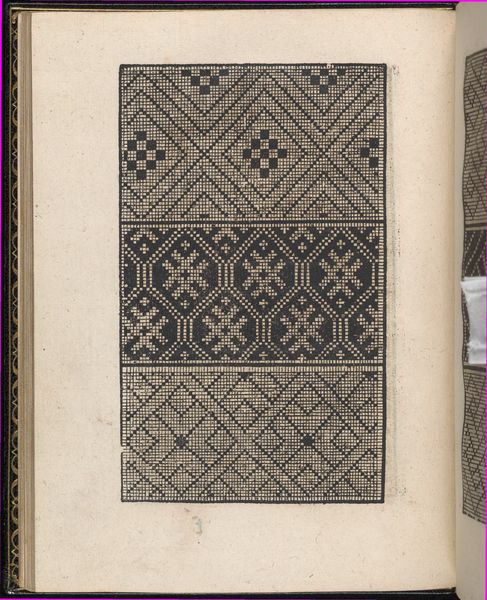
drawing, print, ink
#
drawing
# print
#
11_renaissance
#
ink
#
geometric
#
line
#
italian-renaissance
Dimensions: 9 5/16 x 7 1/4 x 15/16 in. (23.7 x 18.4 x 2.4 cm)
Copyright: Public Domain
Curator: Before us we have "Esemplario di lavori, page 9 (verso)", an intriguing example of a print and drawing combination from 1529 by Nicolò Zoppino. It’s rendered in ink, a rather straightforward but effective medium. Editor: Immediately, my eyes are drawn to the intricate, almost hypnotic geometric patterns. The precision is quite captivating! It evokes a sense of timelessness, of course, and order with a stark, high-contrast design that's pleasing to the eye. Curator: Indeed. "Esemplario di lavori" translates roughly to "A sample of works." It was intended as a pattern book, providing templates for needlework and other crafts, so domestic manufacture, women’s work, and ideas of value related to time spent should also enter into our thoughts. Editor: I find the use of line particularly interesting. Look how the patterns vary; from what appear to be woven diagonals in the center to a repeating, almost basket-weave motif at the top. The controlled execution using simple lines creates diverse textures and layers within the rectangular borders of each sample. Curator: Zoppino was working during the Italian Renaissance, a period of flourishing art and culture, heavily influenced by classical ideals. Such pattern books became increasingly popular in 16th-century Europe, reflecting growing literacy and the desire for decorative skills amongst the emerging middle classes. The Metropolitan Museum is also showing this example virtually right now; which creates greater cultural reach. Editor: Right, but these designs speak beyond mere practical application; they possess an inherent aesthetic value. I can feel how the Renaissance values—proportion, harmony, balance—are present. Zoppino creates rhythm from simple shapes, building towards visual delight beyond craft. The relationship of figure to ground enhances readability too. Curator: Precisely. And consider its purpose in society. These designs served as vital tools for the transmission of artistic and cultural knowledge, enabling the standardization and spread of stylistic elements across geographical regions. What a remarkable contribution from domestic objects to a period of social expansion! Editor: Agreed. Thinking through formal lenses and contextual history enriches the work even more. This print drawing becomes less of just an old relic and transforms into something living. Curator: Exactly. A poignant look at how form intersects with human activity—a vital function for any artwork across eras.
Comments
No comments
Be the first to comment and join the conversation on the ultimate creative platform.
